Musings

“Hurry! Quick”—that’s what I was thinking as I grabbed for Blue (the point and shoot), when we came upon this monstrosity. I thought that even before I wondered what it was.
Crenelated towers with fat cylinders nestled among them. The area is called Mount Airy. Turns out these are water tanks (view from above). And donchaknow, gravity is your friend when you’re piping water hither and yon. Including in Ohio.
Posted at 11:01 PM |
2 Comments »
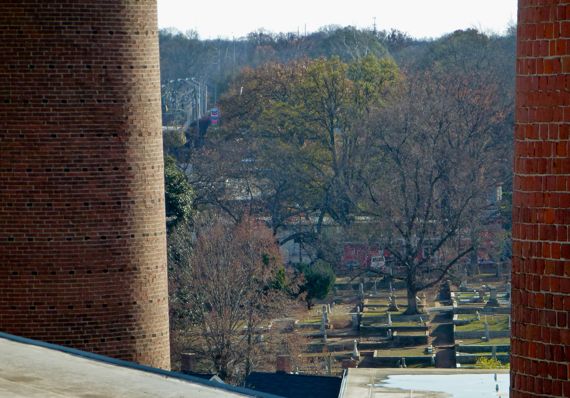
We toured the Fulton Bag and Cotton Mill this afternoon, shepherded by historic preservation consultant Bamby Ray (for real; well, she really goes by that—her “real” name is Muriel). The remaining buildings of the mill complex are now residential, and, despite the intervention of fire and tornado, have been capably rebuilt.
This view is east-southeast from a roof of one of the large mill buildings, through the two towers of the steam power generation complex, to its neighbor, the Oakland Cemetery.
It’s difficult to pick one picture to represent the many lovely views we had of the mill complex….
Posted at 7:53 PM |
Comments Off on Historic prezz-err-vay-shun
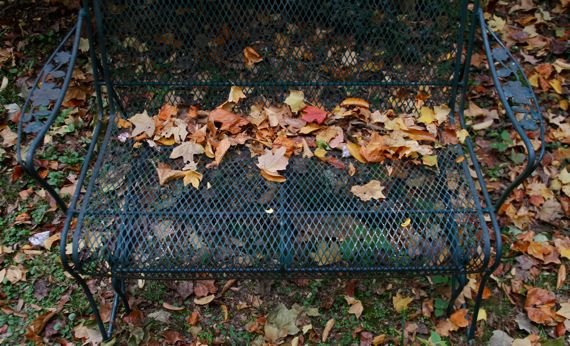
We sure aren’t ready for snow here (oooh, Colorado), but we did have some precip—after I took this shot around noon. I love when the leaves are down yet still are fluffy and colorful. Is it okay to describe dry leaves as fluffy?—you know what I mean—they’re not matted by rain yet. The difference by tomorrow morning will be…noticable.
Read a bit about the Northern and Southern Iroquois—umhm, Haudenosaunee—today….
Posted at 8:31 PM |
Comments Off on Just say Haudenosaunee three times fast
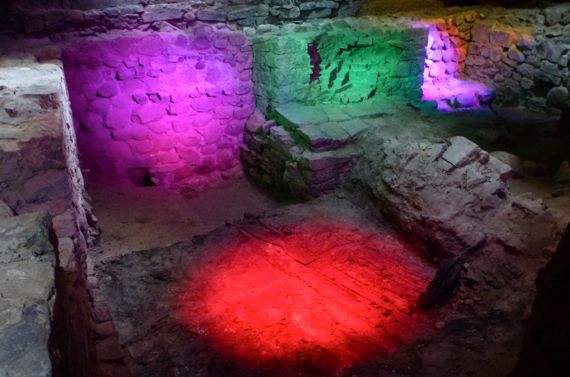
I’ve never excavated foundation walls in this density before, and I’ve certainly never seen them color coded as to age.
Posted at 9:32 PM |
3 Comments »
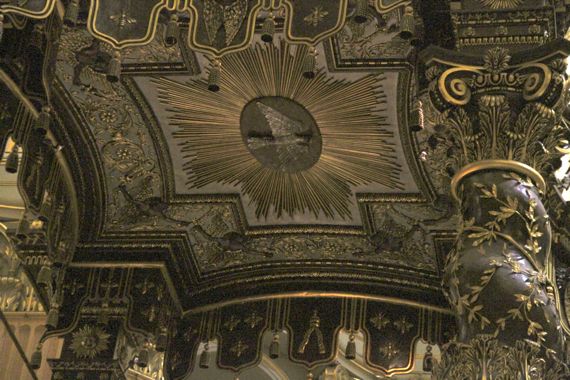
I’m definitely not up on the architectural detail in Catholic houses of worship so I don’t know the “proper” name of this feature, but I did enjoy this bird on the ceiling of the rooflet over the altar in this cathedral. Out front is a statue of the original patron, and the pigeon atop his head loved his perch (coo-coo) and did not take flight for the whole five minutes we spent in front of the façade.
Ah, wandering along links in WikiPee, I discovered that the rooflet is a baldachin, Italian baldacchino. There’s one in St. Peter’s (Rome), and this building was meant to imitate that one, hence this copied detail mimicking the Bernini original there. Enough; I will probably forget this in a few days….
Posted at 5:37 PM |
1 Comment »
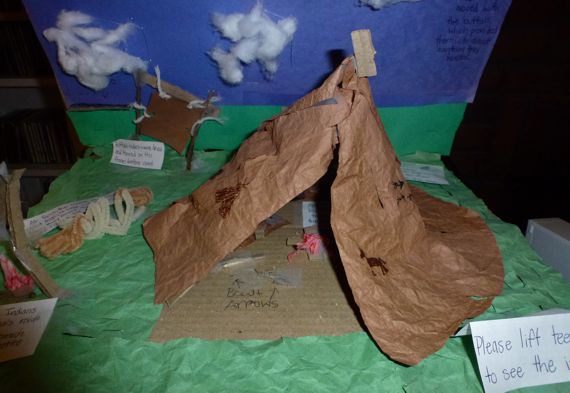
I just love dioramas. And I really love dioramas made by one person in their own vision.
Kudos, G!
I remember being spellbound as a kid each time I was taken to the museum at MSU as I examined the detail in their dioramas. I particularly remember one of the square in the Aztec version of downtown Mexico City (that is, Tenochtitlán) and of a small family of deer in a tropical forest somewhere that had leaf-cutter ants traipsing along the spine of a tree’s buttress-root. In fact, when I encountered leaf-cutter ants in the wild, maybe for the first time—and it was many years later—I watched and watched.
A diorama had come to life!
Posted at 10:22 PM |
2 Comments »
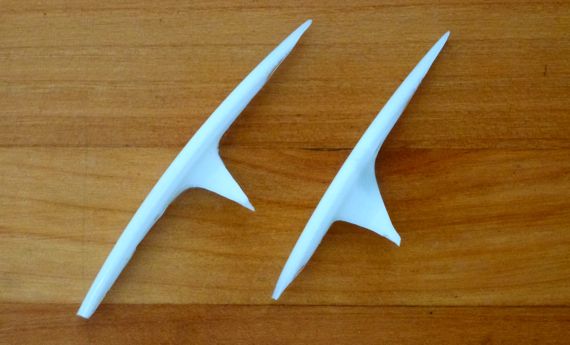
Archaeologists can spend a lot of time with fragments. How they have fractured tells you something about the material they’re composed of and how they broke.
These are Corelle, pieces of the rim of a 2-quart serving bowl in Winter Frost White (the web maintains), although they look a bit blue here.
Corelle is a tempered glass, and I’ve never before seen glass break into elongated shark’s teeth.
Posted at 2:42 PM |
Comments Off on Distempered glass

Spent at least half the day and most of my daily allotment of alert brain cells on the 2011 articles in Cliodynamics, the journal discussing the intersection between mathematical analysis and history (mostly).
Then I took more of those sun-dried tomatoes I mentioned yesterday and made some sloppy joes, of course not like your mom made, if she was a Midwestern cook from my childhood. And it wasn’t just the sun-dried tomatoes.
Posted at 10:22 PM |
Comments Off on Wide ranging Tuesday
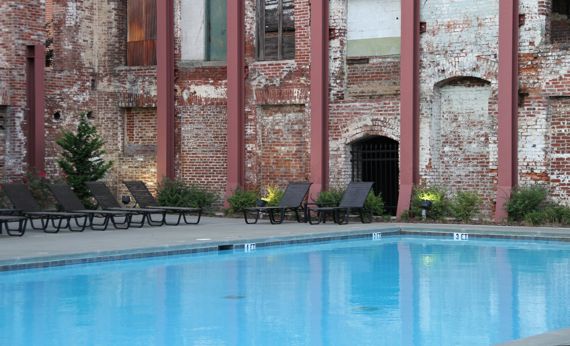
Right in the middle of the former Fulton Bag and Cotton Mills, the developers dropped in an outdoor natatorium—an amenity for residents of the factory-turned-housing complex of today. The weather has turned cool enough that at dusk on this Saturday night not a soul was swimming or socializing poolside.
Posted at 8:22 PM |
Comments Off on Repurposed buildings
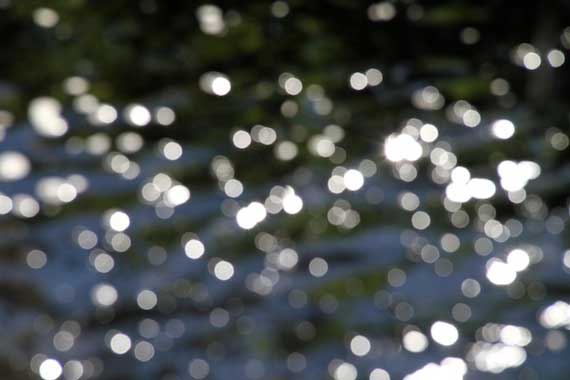
Google is amazing. Or, really, what’s out there on the web is amazing.
Recently, a friend suggested taking a look at Hellhound on His Trail by Hampton Sides. So, I requested same of the county library. The wheels of transference brought it to my branch, and wah-lah, I paged through it a bit this morning.
A weird fact jumped out at me: James Earl Ray worked in the bakery in prison, in the Missouri State Pen.
Way back in the mists of time, I worked in Burwell NE, in the very interesting Sandhills (called the “the largest and most intricate wetland ecosystem in the United States” in WikiPee), and one of our local friends was Buck the Baker. You see, one of the stories Buck told, and I never had a reason to doubt the truth of his stories…he said he baked for Uncle Sam during WWII, and one of the guys who worked under him was…James Earl Ray.
What, I wondered, happened to Buck the Baker? He had heart problems when we knew him, and he was well into his sixties, so I figured I knew what I’d discover, but the bigger mystery that had to be solved first was: what was Buck’s “real” name? Several years ago when JCB and I were out wandering, we went through Burwell, and I think I identified the storefront that had been his bakery. It is neither a bakery or restaurant now, as it was then.
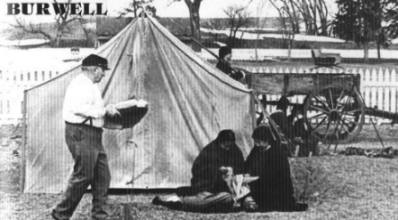
My very first search attempt turned up this Virtual Nebraska page authored by Emma Bristol (thanks Ms. Bristol!), which reveals that Buck’s name was Orval D. Newbury. And there’s a picture!
How heartwarming to find a picture of Buck at Fort Hartsuff, where he loved to bake and participate in reenactments! (That’s him on the left. Here’s a snow-falling-on-cedars moment when we stopped by there.) Buck once served our whole crew “elk* stew”—he said it in quotation marks and wouldn’t answer questions about it) at a special evening event hosted by the manager (I can’t remember his name), his wife (they also had an octagon house down in Ord—I think this one), and their lovely children. How special!
The fall we were there Buck made me the largest b-day cake I’ve ever had, a giant sheet cake. We even sent pieces home with passersby!
Just to close the circle, Google also reveals that Buck went to the great teepee in the sky in the early 1980’s (records I found differ), not long after our fieldwork ended. And, in concert with his interest in history, Buck also left an interview with the Veterans History Project.
* I’m pretty sure the “elk” went moo.
Posted at 11:40 AM |
Comments Off on Cool guy, Buck the Baker










